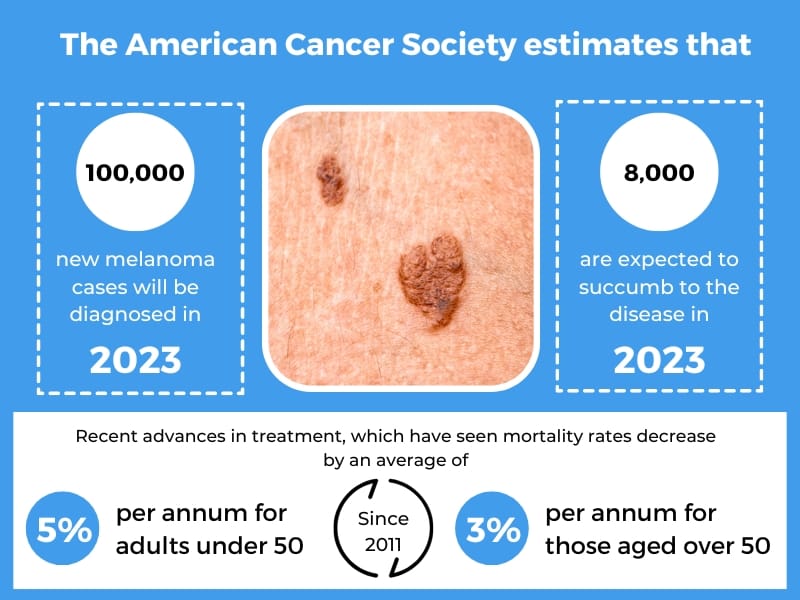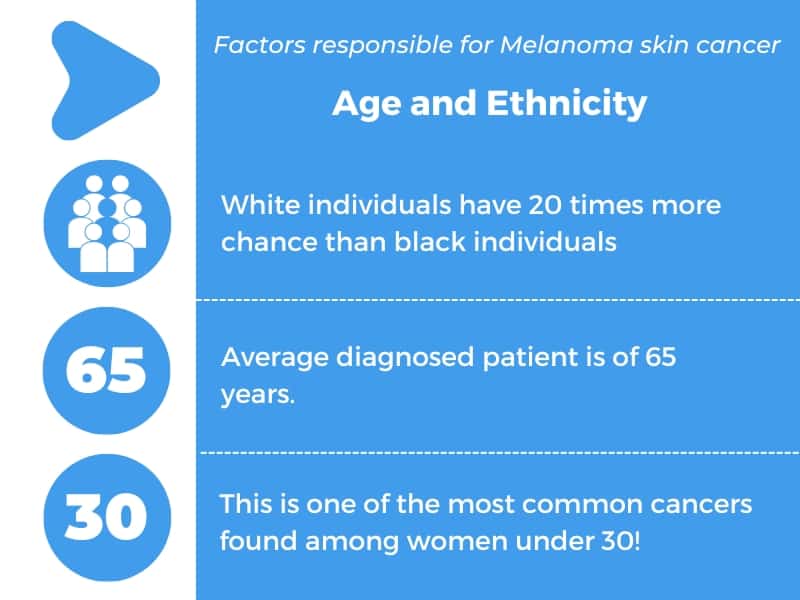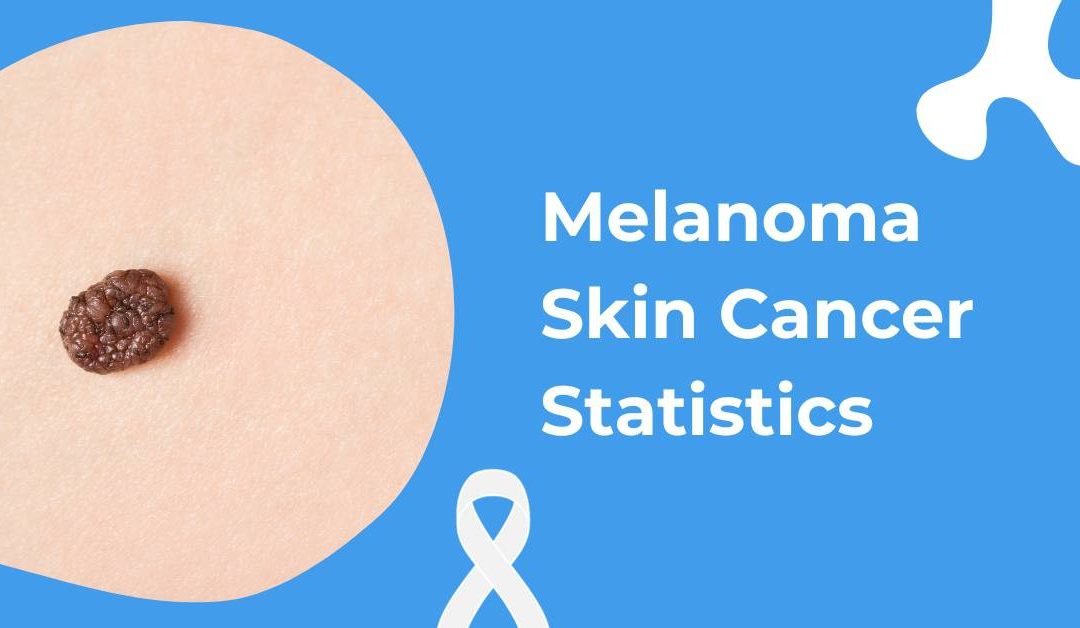What is Melanoma Skin Cancer
Have you heard of melanoma? It’s a type of skin cancer that happens when the cells in your body start to grow out of control. Of course, this can occur anywhere in our bodies and must be caught early – as with all types of cancers – or it could spread. Thankfully, melanomas are much less common than other skin cancer forms! But don’t forget: they’re still dangerous if not spotted early enough.
Melanoma is a severe form of skin cancer that affects cells called melanocytes and can cause tumors to develop on the surface of your skin. It’s typically observed as black or brown spots but may also be pink, tan, or white if certain pigments are absent. This type of cancer tends to occur more often in lighter-skinned individuals than those with darker complexions; however, it can still affect anyone regardless of ethnicity – including areas such as palms/hands, soles/feet, and mucous membranes like eyes and mouth! Melanomas are even scarier because they’re much harder to detect early compared to other cancers, which means treatment further down the line could become way more challenging. So don’t take any chances when looking after yourself – remember, prevention (wearing sun protection!) always beats cure!
How many people are diagnosed with melanoma?
Cancer of the skin is by far the most common of all cancers. Melanoma accounts for only about 1% of skin cancers but causes many skin cancer deaths.
The American Cancer Society estimates that almost 100,000 new melanoma cases will be diagnosed in 2023. Sadly, close to 8,000 people are expected to succumb to the disease this year – a concerning number given recent advances in treatment, which have seen mortality rates decrease by an average of 5% per annum for adults under 50 and 3% for those aged over fifty since 2011.
Melanoma skin cancer affects people with vastly different risks depending on factors like age and ethnicity – White individuals have a staggering twenty times more chance than Black individuals. While the average diagnosed patient is 65, young adults are not exempt from this dangerous disease; in fact, it’s one of the most common cancers found among women under 30! These variables influence your individualized chance of developing melanoma – don’t forget to look into how these could affect you by reading relevant articles online or discussing them with professionals.

Melanoma: Statistics
Did you know that melanoma is the fifth most common cancer for both men and women in the United States? While it typically affects older people, 2,400 cases of this type of cancer were estimated to be diagnosed among young adults aged 15 – 29 just last year! It’s more than 20 times more common in White people compared to Black individuals. Women tend to have higher rates before they turn 50 whereas after age 50 there are usually greater numbers seen amongst men. So make sure your skin health stays a priority at any stage or gender-life cycle!
In the US alone over 97,000 adults will be diagnosed with skin c
ancer in 2023. Globally, that number stands at a staggering 324 thousand this year! It’s clear we need to really ramp up our efforts to combat melanoma; prevention is key for staying healthy and safe from these dangerous diagnoses.
For decades, cases of melanoma surged alarmingly – that is until the early 2000s. Thankfully for those under 50 years old, rate stabilized in women and even dipped slightly in men: a much-needed reprieve! Since 2015 however there’s been an upswing among people aged over 50; with rates edging forward by 1% or so per annum within females while males have remained steady.
With the perils of skin cancer becoming increasingly evident, it’s reassuring to see that teens and adults in their 20s are taking action. From 2007 – 2016 there was a notable 6% decline in adolescents aged 15-19 diagnosed with melanoma each year; meanwhile the number for those in their 20s decreased by 3%. However, unfortunately men from 30+ saw only a slight reduction while women remained steady. But why is this happening? We can thank increased sun protection practices plus less indoor tanning as contributing factors!

Melanoma may be rarer than other skin cancers, but it’s also much more deadly – accounting for around 7,990 deaths in the US alone this coming year. Thankfully though progress has been made with estimates showing that deaths from melanoma have gone down an average of 5% and 3%, respectively amongst those under 50 or over. This is thanks to advances in treatment which are making a real difference globally too – helping bring the worldwide death toll related to melanoma down by 57k last year!
Knowing your survival rate is a powerful tool for understanding melanoma prognosis. The relative survival rate helps doctors estimate how well a person with this condition may fare compared to someone without it over time, based on factors such as age and characteristics of the cancer itself. To break that down in easier terms; if out of 1,000 people similar in age and other traits – 900 were expected to be alive after 5 years before being diagnosed with the specific type of cancer studied here, then 810 would still be living at five year mark – making up 90% or 9/10ths who had survived due to treatment efforts!
Melanoma is an unpredictable condition, and its survival rate varies greatly depending on certain factors. For those with thin melanomas that have not spread to the lymph nodes or other sites, their 5-year relative survival rate stands at a promising 99%. However if it has progressed beyond this point then the prognosis isn’t as rosy – for cases where it has spread to nearby lymph glands the survival rate drops down to 71%, while once more distant parts of your body are affected you’re looking at 32% chance of living past five years. Thankfully medical advances in recent times mean these statistics do appear slightly less scary now than they may’ve been even 10 years ago! Whilst people should take comfort from these figures, though always consult with your doctor first about exactly what sort of outcome can be expected for each individual case.

